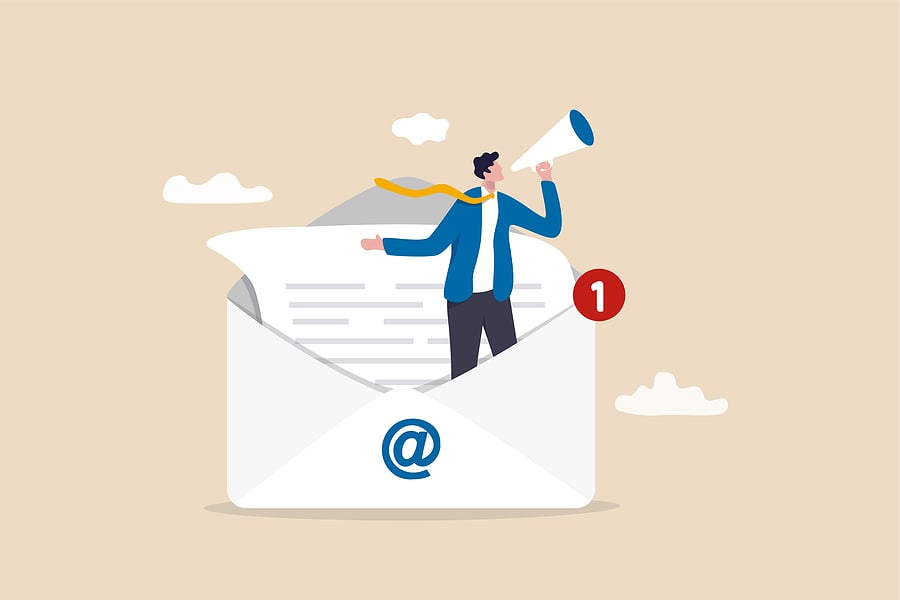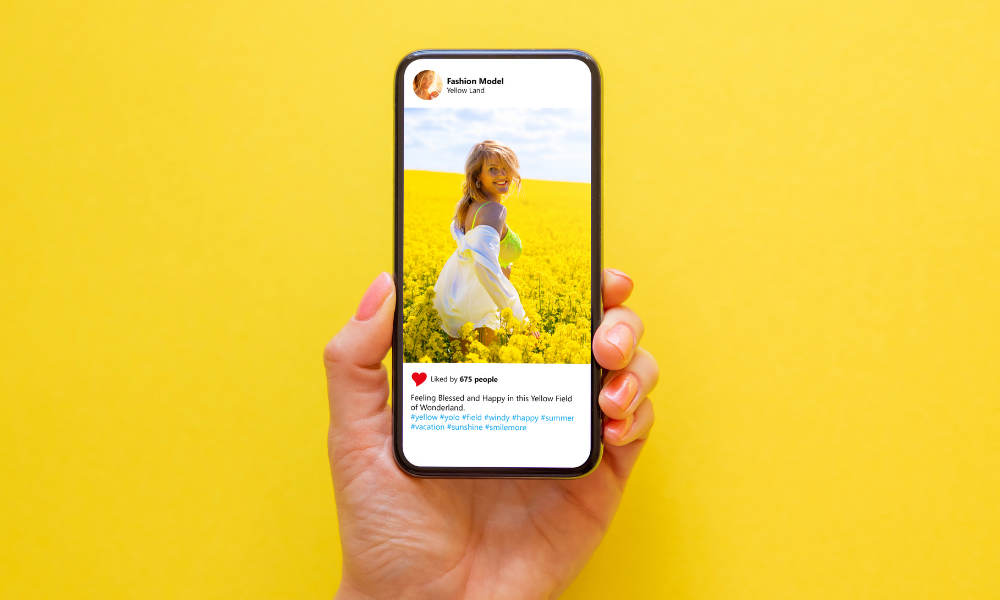Getting Started: How To Use Email Marketing To Grow Your Business
In 2022, the number of global email users was forecast at 4.3 billion. In 2025, that number is expected to grow to 4.6 billion—that’s more than half...
6 min read
 Amy Judge
:
October 21, 2025
Amy Judge
:
October 21, 2025
![Using Key Metrics To Set [and Reach!] Your Email Marketing Goals](https://www.wildfigmarketing.com/hubfs/bigstock--198359698.jpg)
How do you know if your email marketing is working? (And what does “working” actually mean?)
If you’ve been asking yourself these questions, you’ve come to the right place.
When done well, email marketing can be one of the most effective ways to market your business. If you’re sending beautiful, well-crafted emails, but you’re not seeing results, you may be missing a key ingredient to email marketing success: setting measurable goals backed by metrics.
Every great email campaign starts with a plan—a roadmap that connects your audience’s needs to your brand’s goals. Below, we’ll break down how to use key metrics to set email marketing goals, including how to set effective goals, which metrics to track, and how to use those metrics to refine your strategy.

Not setting goals for your email marketing strategy is like traveling without a destination—you’re roaming around, maybe even enjoying the sights…but you’ll never end up where you really want to go. Setting goals gives your email marketing focus, direction, and measurable impact.
Email marketing goals help you:

The goals you choose to set will depend on what matters most for your business. Here are some common examples to get you started:
The more specific your goals are, the easier it’ll be to track success and spot opportunities for improvement.

First, define goals that are SMART:
To make your goals even SMARTer, take a look at metrics from past campaigns and industry benchmarks to help you set specific targets. Also, adjust your goals as you go, leaning on metrics to direct your future goals.
Remember: metrics aren’t just numbers. They’re insights into audience behavior, preferences, and engagement, helping you make marketing decisions that better reach your ideal customers.

Once you’ve set your goals, your next step is to determine which metrics to track to know when you’ve achieved those goals. For example, if your goal is to drive sales, focusing only on open rates won’t tell you the whole story—you’ll need to track conversions and revenue per email.
Let’s break down the most valuable metrics that help you understand whether your emails are hitting the mark.
This shows how many recipients opened your message. It’s an early indicator of subject line effectiveness, timing, and audience interest.
Note that you’re not looking for a 100% open rate. (Seriously…if your emails are getting that kind of attention, tell us how you do it!?!)
For most email campaigns, look for a minimum open rate of 18-20%. However, if your email list is primarily made up of prospects and leads, your numbers might be lower (13-14%). If the open rates of your campaign are higher than 25%, you’re knocking it out of the park!
Tip: A/B test different send times and headlines to see what hooks your audience.
CTR tells you how many people clicked a link within your email. A high CTR signals that your content resonated with your audience and your calls-to-action (CTAs) were clear. Keep in mind that your CTRs will most likely be much lower than your open rates. The average CTR for most email campaigns is 4-6%.
Tip: To improve your CTR, add relevant links throughout the body of your email in addition to an eye-catching CTA button at the end.
This measures the number of subscribers who completed your desired action—such as making a purchase, scheduling a call, or filling out a form.
For example, if your email includes a link to download a lead magnet, the conversion rate for that email would measure how many people downloaded the lead magnet after clicking on the link.
It’s the ultimate indicator of ROI.
Tip: One way to improve your conversion rate is to keep the action you want your subscribers to take as simple as possible.
Bounce rate is the percentage of emails that couldn’t be successfully delivered to the recipient’s inbox. Measuring your bounce rate against your open rate gives you a good idea of the health of your email subscriber list (i.e., if the email addresses on your list are legitimate or not).
There are two types of bounces:
Too many bounces will make you look like a spammer to email providers, so it’s in your best interest to keep your bounce rate low. A low bounce rate = a high delivery rate, and more eyes on your emails.
Tip: Preemptively lower your bounce rate by requiring a double opt-in to subscribe to your email list.
Unsubscribe rate refers to the percentage of email recipients who unsubscribe from your mailing list after opening an email. It essentially monitors audience interest and email list quality. A spike here could indicate content fatigue or frequency issues. It’s a signal to revisit your segmentation or messaging strategy.
Tip: Reduce your unsubscribe rate by regularly cleaning out your email list and implementing sunset rules to phase out unengaged subscribers.
This metric helps you evaluate the direct financial impact of your email campaigns (i.e., how much revenue each campaign brings in). This helps connect your email performance directly to sales outcomes.
Tip: Improve your RPE by sending personalized messages at the right time so recipients see the offer as the perfect fit.
Engagement rate combines open and click rate data to give you a big-picture view of the effectiveness of your campaigns. It allows you to see overall engagement trends over time. If you see this number rise, you can be assured that your content is connecting.
Tip: To improve engagement rate, divide your email list into smaller segments based on interests, customer journey stage, or even location. Then personalize your email for each segment.
Forward or share rate shows you how many recipients shared your email with others. When people share your emails, they’re endorsing your brand and showing that they find your content relevant and valuable.
Tip: Improve share rate by including a “share” button in your emails or encouraging readers to forward the email to their friends.

Setting goals and tracking metrics is just the start—you also need to respond to what the data tells you. Here are a few ways to turn your analytics into action:
To give you an idea of what it can look like to use key metrics to set email marketing goals in real life, here’s an example:
Imagine you run a boutique retail store and your goal is to drive sales through email. First, you set a goal to increase conversion rates by 10% over the next three months. Then, you focus on optimizing your click-through rate with stronger CTAs and cleaner design (after all, customers won’t convert if they don’t click!).
Next, you implement segmentation to target repeat customers with exclusive perks. And finally, you measure your results weekly, making adjustments to your messaging as needed to improve low-performing segments.
This process combines goals with data-driven insights, ensuring that what you send matters to your audience and your bottom line.
The beauty of email is its flexibility. By staying curious and responsive, you can continuously refine your approach and meet (or exceed) your goals!
Consistent progress doesn’t happen through sheer luck—it comes from setting clear goals, paying attention to key metrics, and continuously optimizing your strategy. By connecting every email campaign to a measurable outcome, you’ll better understand your audience, improve your return on investment, and build genuine audience loyalty.
If the idea of tracking, testing, and optimizing your email campaigns feels daunting, that’s where we come in.
At Wild Fig Marketing, our team can help you craft data-backed strategies that drive growth. Let us help you build an email marketing program that delivers results you can measure (and celebrate!).
Ready to get started? Schedule your exploratory call today—and take the first step toward email marketing that truly works for you.

In 2022, the number of global email users was forecast at 4.3 billion. In 2025, that number is expected to grow to 4.6 billion—that’s more than half...

Part 1 of our Key Metrics Series When you aren’t seeing results from your marketing, it can be easy to think you need to spend more money on your...

Part 6 of our Key Metrics Series With its focus on visual content and younger target demographic, Instagram is Facebook’s hipper, more creative...